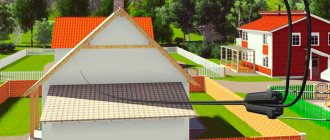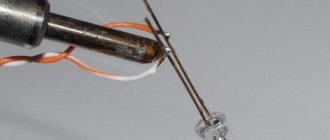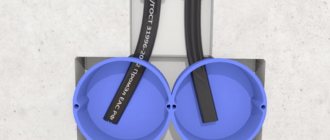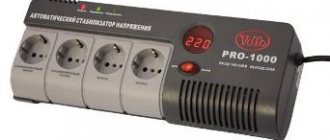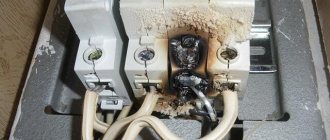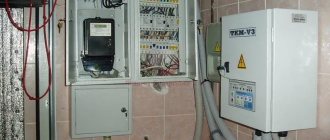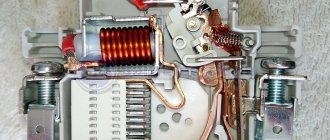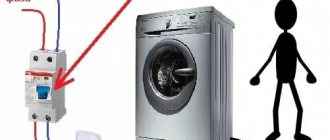In this article we will talk specifically about medical IR thermometers, i.e. about instruments designed to measure body temperature, as well as what determines the accuracy of pyrometers.
You can find a lot of information on this issue on the Internet. In most cases, everything is written by people who are far from IR thermometry and IR thermometers for monitoring body temperature. Therefore, the information provided is incomplete, unsystematic and, most often, far from the truth.
That is why, as developers and manufacturers of medical thermometers and, in particular, IR thermometers, we decided to explain in as clear a language as possible how an IR thermometer works, how it differs from an industrial pyrometer, what affects its measurement accuracy and how to ensure that this accuracy increase.
What is a pyrometer and where is it used?
A pyrometer is similar to a regular room thermometer in principle of operation, with the only difference being that it can measure temperatures over a larger range and at a distance. That is, you do not need to touch the object being measured to find out its temperature (although there are also contact pyrometers). This is very convenient, since you can measure very hot surfaces (up to 300 - 550 °C).
Read also: How to water flowers in a box
Home appliances Digital multimeters: which one is better to buy for the home?
The pyrometer has found application in the following areas:
- Electrics . They measure the temperature of the connections. For example, if the temperature of the connection between the phase bus and the wire is 80 - 100 ° C, and the ambient temperature is 20 ° C, this means that the contact is weak, therefore it heats up, and it needs to be tightened.
- Car repair . For example, you notice that your car engine is getting very hot, and you need to find out why. You measure the temperature at the thermostat inlet and the temperature of the radiator. If the temperature difference is large, then the problem may be with the thermostat.
- Repair of electronics and household appliances . You can check whether the processor or motherboard in your computer is heating up. You can also find out the temperature of the bearings in the moving components of electric motors and, if it is high, then make repairs.
- Calculation of heat loss in the room . A pyrometer will allow you to find out the temperature of walls, windows and doors so that you can calculate heat loss and insulate accordingly if necessary.
- Checking the heat transfer of the heating system . The device will allow you to check how the boiler heats the individual heating system, or whether the temperature of the batteries in the central heating corresponds to that declared by the state (by law).
Pyrometer (non-contact IR thermometer) with “laser target illumination” 
I will describe a non-contact thermometer that recently arrived from Gamesalor with a laser indication of the measurement point. The goals of this review are: - to refresh your memory of this class of very useful devices; — walk through the reference points of the Celsius scale with infrared radiation; — give a short comparison with a contact thermometer; — and also tell you some tricks for taking measurements.
There has already been a review of this thermometer, very detailed from the technical side, but lacking any zest in terms of metrology and comparison with other thermometers.
Regarding the difference in prices: the lower price is possible with the wishlist trick (add to the wishlist, then from there to the cart), the upper price is possible if you go straight from the display to the cart.
Let's refresh our memory
The principle of operation
of the device is very simple: the photo sensor of the device receives infrared radiation of a certain spectrum, reflected or emitted by the object at which the device is directed.
Contrary to popular belief, the device itself does not emit anything
.
By the way, checking this is very simple - you just need to point the device towards the lens of your mobile phone. Due to cheaper designs, mobile phone cameras do not have an IR filter. Taking advantage of this feature, many people check IR remote controls for household appliances in this way. All those who say the opposite either do not understand the principle of operation or did not read the instructions carefully. The instructions say “ do not point
the laser pointer at your eyes
.” Optical resolution
(or viewing index, or receiver aperture angle) is the same numbers 12:1 (or aperture angle of about five degrees) that are indicated on the device body. These numbers, in addition to indicating which “spot” will be captured in the measurement area, are also an indicator of the scope of application of the device. Those. if I want to measure the temperature of an object, say from 5 meters, then this object should be a blast furnace or, at least, a potbelly stove, because the diameter of the “spot” will be 41.6 cm. Those. This is a “short range” measuring device. By the way, I have some kind of ambiguous feeling about what is written on the body: on the one hand, this is the same as that of the author of the previous review - at one and a half meters the diameter of the spot is 13.2 cm. On the other hand, 150cm/12=12.5cm, i.e. does not coincide (although the average figure coincides, but why such nonlinearity then?). On the third side 60″*2.54cm = 152.4cm (that is, about one and a half meters). I don’t know what the Chinese meant - I can only guess :))
We go further - reference points
Zero degrees
. Bowl with water and ice. When ice gets into the “spot”, the temperature is sub-zero; if you disperse the ice and point it at the water, you get almost zero.
Boiling temperature. On the water itself, the temperature is lower, due to the fact that steam enters the “spot”, which has already cooled down a little. Therefore, I measure the wall of the mug, after letting the water boil for about 5 minutes.
As you can see, it makes no difference where the thermometer is pointed - at the enamel wall of the mug or at a dark picture.
But not everything is so smooth. There is such a thing as “emissivity”, also known as the degree of blackness (relative to an “absolute black body”). Some items cannot be used correctly
"measure". For example, a boiling and whistling kettle made of polished stainless steel shows only 70-80 degrees. Therefore, such objects need to be “measured”, for example, on a handle (of course, if it is made of a different material). I was able to get a reasonable temperature on this kettle only by removing the whistle and pointing the meter inward - inside the kettle, due to the fact that the spout is very narrow (unlike a mug with a wide “neck”) - the steam simply did not have time to cool down and the temperature turned out to be “correct” - in the range of 99-101 degrees.
Comparison
it will be small. I simply didn’t have time to measure zero degrees in a bowl of ice, because... the ice melted, and there was no more portion. With the remaining ice, the contact probe thermometer showed 1.1 degrees Celsius. The boiling point of the probe showed 101.0 degrees. I didn’t touch the bottom or walls.
Perhaps 1 degree plus is precisely its error.
conclusions
I believe that a non-contact thermometer is more accurate (with its caveats) than Chinese contact thermometers.
And it provides greater
accuracy than the stated plus or minus two degrees or two percent (with a caveat for shiny, polished and reflective surfaces).
Device and principle of operation
The basis of the pyrometer structure is an infrared radiation detector. The data is converted via a built-in electronic system and displayed on the display.
Read also: how to change your appearance beyond recognition
A typical pyrometer is shaped like a pistol with a small display. The compact control panel, laser guidance and high accuracy during close interaction with the object explain the demand for the tool among workers in the engineering and technical fields.
The main working elements of a pyrometer are the lens, the receiver, and the display on which the measurement result is displayed. The principle of operation of the pyrometer is as follows: infrared radiation emanates from the object being studied and, through a lens, it is focused and sent to the receiver (thermopile, semiconductor, thermocouple).
How do pyrometers differ from thermal imagers?
A pyrometer measures degrees at a specific point of an observed object, and a thermal imager is capable of displaying a color picture of the distribution of thermal zones over its entire surface. That is, the first device can be called a non-contact thermometer, and the second one combines the features of a thermometer, a video camera and an LCD display, but takes pictures not in the visible light spectrum, but in the infrared range. Thermal imagers are more versatile and visual in operation, but pyrometers also have their advantages, the main ones being cost-effectiveness and mobility.
Application area
Pyrometers have found quite wide application in those industries where a large number of heating devices are installed. In the field of construction and thermal power engineering, they are used to calculate the heat loss of structures, including a pyrometer that helps to identify damage to thermal insulation.
In industry, such devices make it possible to analyze the temperature of various processes remotely. This is necessary, for example, in mechanical engineering, metallurgy and other industries.
Thus, electricians check the heating level of wire connections, and car mechanics check the heating of car parts. Pyrometers come to the aid of scientists during various studies or experiments: this is how they determine the accuracy of the temperature of substances and bodies.
In everyday life, people use such devices to determine body temperature, water, food, etc.
Introduction
Radiation thermometers (or pyrometers) are non-contact temperature sensors, the action of which is based on the dependence of temperature on the amount of thermal electromagnetic radiation received from the measurement object. This is a whole group of devices, which includes both devices that measure the temperature of a point on an object, a region on an object, or that allows one to obtain a picture of a one-dimensional and even two-dimensional temperature distribution over a given measurement area. Radiation thermometers are very widely used in various industries: metallurgy, glass and ceramics, semiconductors, plastics, paper, etc. Radiation thermometers are also used in medicine, forensics, human rescue and security systems. The main difficulty is measuring the temperature of a body whose emissivity is unknown. The object of measurement is most often far from a completely black body; it can be an oxidized surface, translucent glass, a mirror surface, etc. In addition, difficulties arise in accounting for radiation emitted by a nearby area and radiation reflected from neighboring objects. Unfortunately, there is no single optical pyrometry method that can cover the full range of situations encountered. However, various approaches have been developed, each of which is able to overcome one or two of the above-mentioned difficulties. Instruments of this type have many names: optical pyrometers, radiation pyrometers, total radiation pyrometers, automatic infrared thermometers, continuous radiation thermometers, line scanners, thermal imaging radiometers, surface pyrometers, ratio pyrometers, two-color pyrometers, etc. These names are more related to the purpose of the devices. A general term that applies to this class of devices and has a technical functional meaning is radiation thermometers. Recently, interest has increased in the formation of an international universal terminology in non-contact thermometry and the development of a nomenclature of international requirements for the characteristics of radiation thermometers. Thus, in 2006-2007, a new IEC standard “Technical requirements for radiation thermometers” was developed. (IEC TS 62492 Radiation thermometers - Part 1: Specifications for Radiation Thermometers). The new standard was put into circulation in March 2008. For information on the participation of Russian specialists in the development of IEC standards, see. RGE section. A detailed analysis of terminology in the field of pyrometry and trends in the development of terms is given in the article published on the website by the director of TECHNO-AS LLC S.S. Sergeev “Trends in changes in terminology in pyrometry.” We invite you to discuss basic terms in the forum section “Terms and definitions in the field of thermometry”. Radiation thermometers are evolving instruments, with many reports at international conferences and many publications in journals devoted to improving non-contact methods of temperature measurement and increasing their accuracy. We hope that on our website you will be able to read articles about new products in this area in the sections “publications”, “manufacturers of non-contact temperature sensors”, “device catalog”.
Stationary modification
These models differ significantly in layout and represent a cylindrical optical module, inside of which a measuring sensor is enclosed. This component is connected by a special durable cable to an electronic control module, which is equipped with a monochrome liquid crystal display and a push-button control menu.
The unit is placed in a closed panel, power and signal lines are connected. Subsequently, the value of the output current (or voltage) is transmitted via wires to the computer using special logic tools (controllers) and specialized software. This scheme is more convenient, since the screen of the electronic module is small. It is difficult to distinguish the displayed readings.
Stationary pyrometers are suitable for use in various industries. They are manufactured with a wide range of measurable limits. Thanks to this quality, the device allows you to control any technological process related to temperature.
Types and classification
Depending on the functional characteristics, there are several classifications of pyrometers.
According to the essential method used in the work:
Optical pyrometers are divided into:
- Brightness;
- Color, or multispectral.
Depending on the aiming method, devices with optical or laser sights are distinguished.
Based on the emissivity used, pyrometers with variable and fixed coefficients are distinguished.
Depending on the possibility of transportation, pyrometers are divided into stationary and mobile (portable).
Based on the possible measurement range, the following are distinguished:
- low temperature (-35…-30 °C);
- high temperature (+400 °C and above).
What does a pyrometer measure?
The subject of the definition is the average temperature value for the surfaces of objects and bodies within the measurement spots. They have an ellipsoid or round shape. The longer the path from the measurement object to the pyrometer, the larger the size of the spot. The device is aimed at the desired object or material using a laser pointer built into it. It is directed directly to the center of the circle being measured.
Modern pyrometers record temperature remotely, allow minimal errors, and also have an ergonomic design and autonomous power supply. This equipment is used when necessary:
- control the temperature conditions of objects in conditions of high risk of electric shock;
- deal with the surface of objects where sudden temperature changes may be observed;
- measure the heating force of objects with unusual temperature conditions (high levels on one element and normal values on another element).
Since the device has a special operating principle based on “reading” the radiation of thermal waves in the infrared range, it is capable of recording temperature indicators of objects that are located at a distance of up to 15 meters. Thanks to this, the device has the following advantages:
- safety;
- ease of use;
- high accuracy of recording parameters of bodies, objects, structures, materials.
First, a little theory...
Any body emits thermal energy E, proportional to its surface temperature to the fourth power and emissivity k.
Having learned to measure and convert this thermal energy back into temperature, you can measure surface temperature at a distance (remotely).
Fig. 1. How surface temperature is measured with a pyrometer
Any pyrometer contains some optical system that allows you to take data (collect thermal energy) from a spot of a certain area S at a distance L. The ratio L/D, where D is the diameter of the spot, is called the optical resolution of the pyrometer. The larger this parameter, the greater the distance at which the temperature of a particular body can be measured and the more expensive the device.
Using the optical system of the device, the radiation energy falls on the sensor of the IR thermometer (Fig. 2).
Fig. 2. IR thermometer sensor design
In modern pyrometers, the sensor is a miniature thermocouple, onto the working junction of which the thermal radiation of the controlled object is directed. Near the cold junction of the thermocouple there is a temperature sensor, which is often used as a thermal resistance.
The electronic circuit of the device uses thermal resistance to measure the temperature of the cold junction of the thermocouple and adds to it a second part proportional to the voltage from the thermocouple. IR sensors have long been able to be manufactured in a completely integrated design. There are sensors with digital output.
If all bodies radiated equally, having the same temperature, then the error of the pyrometer would be determined only by the accuracy of its adjustment.
However, all bodies radiate differently. In order to measure the surface temperature of any body accurately enough, it is necessary to accurately know its coefficient of study k.
Typically, the pyrometer is adjusted in production or in a metrology laboratory using an “absolute black body” (ABB), i.e. surface, with an emissivity close to 1. Then the real, averaged emissivity is set in the device’s memory. Most often 0.95. However, there are more expensive pyrometer models in which the consumer sets the coefficient himself. But which one - that is the question. And the emissivity very much depends on both the surface material and the quality of processing, the presence of dirt, rust, moisture, etc. In table 1 shows emissivity coefficients for a number of materials.
| Material | TO |
| board | 0,96 |
| paper | 0,93 |
| basalt | 0,72 |
| rusty iron | 0,70 |
Table 1 Emissivity k for several materials
If the emissivity is incorrectly set, you can get an error of tens of degrees.
How to use?
The manual device is easy to operate. The rules for taking measurements are simple and are as follows:
1. The pyrometer must be turned on;
2. Using a laser pointer, point it at the object to be measured;
3. Press the activation button (trigger).
After completing these steps, the temperature value will be displayed on the screen. An important condition for successful and accurate measurement is compliance with the size of the sighting spot on the surface. If you do not adhere to the recommendation, then this means an unacceptable error.
Due to their operating and installation features, stationary models of pyrometers only need to be configured once.
How to measure temperature correctly using a non-contact method
The process of correct measurement with a pyrometer will look like this.
Determine the material from which the item is made (steel, copper, aluminum). Next, look for its emissivity in the table and enter this correction into the device itself.
And only after that you direct the beam of the infrared pyrometer to the object.
With this measurement you will actually get results close to the actual temperature. Well, those devices in which the coefficient is rigidly set by the factory = 0.95 will simply lie with every measurement.
No matter what angle you direct the beam at, no matter how close you bring the device to the surface, there will be distortions in any case. And here we are no longer talking about one or two degrees.
The error can be tens of units!
Types of pyrometers
All pyrometers can be divided into the following categories or characteristics: by measurement principle, by temperature range and by method of operation.
According to the measurement principle, pyrometers are:
- brightness pyrometers that allow you to determine the temperature of an object by comparing the color with a standard.
- Radiation pyrometers that measure the temperature of an object by recalculating the power of thermal radiation.
- Color pyrometers allow you to draw conclusions about the temperature of an object based on the results of comparing its thermal radiation in different spectra.
By temperature range:
- Low temperature. Pyrometers of this type are capable of determining negative temperatures, while the range of positive temperatures can be quite large.
- High temperature. Pyrometers operate in a high temperature range and are not capable of measuring objects with negative temperatures.
By method of operation:
- Portable pyrometers are designed for use in field conditions. They are light in weight, display indicators, and are self-powered. Designed for a very wide range of temperature measurement applications. They can have internal memory and connect to a computer to transfer data.
- Stationary pyrometers are designed to perform mostly permanent measurements at a specific point. They have increased accuracy and, as a rule, do not have their own display, but transmit data to a computer or control panel. They are able to work under unfavorable environmental conditions. Most often they are used when measurements are required at industrial enterprises. They are large in size and weight.
Which pyrometer is better - laser or infrared?
Pyrometers come in optical and infrared types. It is the latter that are usually used in everyday life; they are compact, have good accuracy and display the results in digital form.
As for laser devices, they are a type of infrared. We are talking about devices equipped with an aiming system. They are more convenient to use than devices that do not have a laser sight. The simplest models of pyrometers measure temperature “over an area” and do not focus on a specific point on an object. Laser-based devices evaluate infrared radiation over a selected small area and therefore exhibit increased accuracy.
Pyrometers with a laser sight are objectively better; they guarantee high measurement accuracy
Specifications
The pyrometer has a number of parameters that characterize its functionality. The choice of the desired device model is carried out according to their values. Let's look at the main ones.
Optical resolution
This is the name given to the ratio of the diameter of the tool spot to the distance to the object. This function depends on the angle of the device’s lens: the larger it is, the larger the area it can cover. The most important factor in the accuracy of the measurement is the application of the spot exclusively to the surface material. If the area is exceeded, the measured value will likely be inaccurate.
REFERENCE. Each pyrometer model has a different optical resolution. The difference between them is impressive, for example, from 2:1 to 600:1. The last ratio is typical for professional devices. As a rule, they are used in heavy industry. The optimal ratio for household and semi-professional pyrometers is 10:1.
Operating range
The operating range of the device depends on the pyrometric sensor and often varies from -30 °C to 360 °C. Thus, almost all types of pyrometers are suitable for domestic use, if we take into account the maximum temperature of the coolant in the heating system up to 110 °C.
Top 3 best pyrometers from AliExpress
Cheap but functional pyrometers can be purchased online through AliExpress. Although the reliability of such devices is considered lower than that of devices from branded stores, they usually cope well with everyday tasks.
Habotest HT650A
A convenient home pyrometer with a circular sight is suitable for determining not only temperature, but also humidity. The maximum threshold for the device is 380 °C; the infrared device operates on a non-contact principle.
The cost of Habotest is from 1400 rubles on AliExpress
Norm 400/600
The infrared device is capable of measuring temperatures up to 400 °C, suitable for any purpose - from medical to household. Despite its low cost, it has a small error of about 1.5%.
The cost of the Norm 400/600 pyrometer is about 4000 rubles
DT-8809C
A mid-budget device from AliExpress measures the temperature of a person up to 43 °C and of inanimate objects - up to 100 °C. It is highly accurate, easy to use, and measurements can be taken from a distance of 5-10 cm.
You can buy DT-8809C from 4000 rubles
Operating principle
The operation of devices of this type is based on the occurrence of infrared radiation and determining the absolute value of the wavelength energy emitted in the infrared spectrum.
The instrument is directed to a distant object, the distance to which is limited only by the diameter of the spot being measured and the composition (“purity”) of the air environment surrounding the object. Measuring the characteristics of an object's radiation (its intensity and spectral composition) with a pyrometric device indirectly determines the temperature of its surface.
The operating principle of the pyrometer determines the main functionality of the instrument:
- measuring the temperature of remote (inaccessible or difficult to reach) objects, as well as the temperature of their moving elements;
- analysis of the temperature regime of energized objects when contact measurement methods are not possible;
- express recording of rapid temperature changes on the surface of an object body;
- study of objects with low heat capacity or thermal conductivity.
Using a pyrometer at industrial facilities and in everyday life does not present any difficulties: the instrument is aimed at the object being examined, temperature data is measured and recorded on the display in a matter of seconds by pressing and holding the trigger.
So, what factors affect the measurement accuracy of an industrial pyrometer?
Let's list a few main factors:
- accuracy of pyrometer adjustment on the blackbody at k = 1,
- accuracy of setting k-emissivity,
- cleanliness of the measurement surface, presence of moisture, dust, etc.,
- time factor affecting the aging of the optical system and electronics. components,
- presence of “light” from extraneous sources,
- correspondence between the diameter of the “spot” and the dimensions of the controlled surface (the diameter of the spot must be obviously smaller).
What is the actual measurement accuracy indicated in the documentation for industrial pyrometers in the mid-price range? +/-1% of the measured value, i.e. approximately +/-0.4°C when measuring the temperature of a surface heated to +40°C. Let's remember this meaning. We will need it later.
What additional functions are there?
Depending on the scope of application of the pyrometer, the feasibility of purchasing is determined: a simple model or with a set of additional properties. In any case, they are worth mentioning:
- Display backlight (Bosch PTD 1 0603683020, ADA TemPro 1600 A00128). Almost all devices have this function and it is justified. Even during operation in poor visibility, the data is clearly visible.
- Built-in memory (ADA TemPro 1600 A00128). Depending on the equipment model, you can save up to 10 measurements. This is very convenient because the information does not need to be written down in a notepad.
- Connection to a computer via USB port. The readings can be saved on a computer for later use in job analysis or reporting.
- Determination of the maximum/minimum value, calculation of the difference between readings, average temperature (ADA TemPro 1600 A00128). These functions are useful if you plan to perform complex diagnostics of the mechanism.
- Holding the received reading on the screen (Testo 830-T3). It is convenient to work with such a device, because after a measurement is taken, the readings will not disappear, but will be visible until the person activates another program.
These parameters must be taken into account when choosing, because with them you can perform even very complex measurements simply, quickly and with pleasure. Detailed information about the characteristics and capabilities of the device is indicated in the product instructions, so be sure to read it before purchasing. Knowing all the most important features of different models of equipment, it will be easy for you to choose the most suitable one.
Don't doubt that using the tool in practice will not be difficult, and imagine the costs that can be avoided by having such an assistant. With a pyrometer, you will be able to promptly detect a “weak” spot in a car engine, in a home boiler room or on the roof. Thus, there is no need to buy a new “engine” (quite expensive), the boiler will not fail because the hose will be changed in time, the wallpaper on the wall of the room will not need to be re-glued due to humidity. Do any of these reasons sound familiar? Then don’t hesitate to place your order through the online store “”! After completing the payment procedure, the purchase will be delivered as soon as possible and you will immediately be able to begin the planned temperature diagnosis.
Advantages and disadvantages
The main advantage of an infrared pyrometer is its relatively simple design. Due to this feature, it has good reliability, small dimensions and low cost.
The second advantage of the device is its high resolution and the ability to determine the temperature of “cold” bodies from -50 to 400°C.
A significant disadvantage of a pyrometer is the dependence of the measurement result on the emissivity of the object’s surface material and their state of aggregation. We have to compensate for this by adjusting the emissivity.

